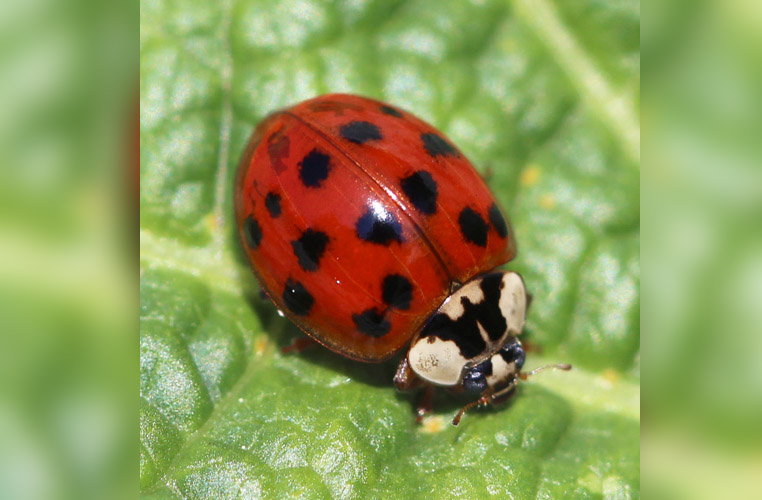Human clearly dominate the world in terms of its impact on the environment and its general effect upon the earth. Insects are man’s greatest competitor for the world’s food resources, both directly by devouring the plants cultivated for food, and indirectly as vectors of disease causing organisms. But we developed skills in chemistry, agriculture and medicine, and now we have many armaments to suppress the insect pests and the parasites they transmit. However, human progress in the battle against the insects is somewhat like climbing a steep sand dune for every metre being climbed, one slips back half a metre; at any point a quick landslide can throw one down to the base again, and each step requires a major effort. A constant striving, and a vast financial expenditure on a day to day basis, does keep the insect pests at bay.
Agriculture provides livelihood to the majority of third world countries including India. Scarcity of food is not uncommon and after the independence, India faced a serious crisis of food shortage but during the late 1960’s the green revolution was launched which made our country self-sufficient in food production. It was made possible by the introduction of high yielding varieties of various crops and by intensive cultivation practices with the use of fertilizers, pesticides and other biocontrol agents.
One of the greatest challenges facing around the globe today is to produce adequate food for the growing population. The situation is gruesome especially in developing countries like India, where food consumption are likely to double in the next decade due to ever increasing population. An increase in agricultural production will be the most important target in third world as well as the developed countries in the near future. In India as well agriculture plays a vital role in the economy. More than 22% of rural households depend on agriculture as primary means of livelihood. Approximately one third of the global food production is estimated to be destroyed annually by over 20,000 species of insects, diseases, weeds, mites, nematodes, rodents and other field and storage pests (McEvan, 1978). The highest lost occur in developing countries of Asia and Africa reducing about 42% of the total agricultural production annually. Report of Union Ministry of Agriculture, India, pointed out that the pests related damages result in an estimated loss of Rs. 50,000 crore annually in agricultural production (Sathe and Bhosale, 2001). Thousands of insects and mites have been attacking agriculture, horticulture and forest crops and livestock. Most of them are considered insect pests because of their activities resulting into an economic loss. The use of insecticides, pesticides and weedicides and other chemicals have no doubt checked the population of pests to some extent. However, the problems in relations to insecticides and other chemicals have again become serious threats to human and other animals. The use of insecticides spoiled the early attempts of biological control and the interest on this aspect is very low as far as there is success of insecticides. In view of these, there is a tremendous development in the use of biological control agents in agriculture fields and forests in recent years particularly in combination with other measures to form integrated control. In these developments, Scaly insects, mango leafhopper, aphids and other small pestiferous insects have received a special attention due to the damage cause by them. This brings more recognition to ladybirds as their predators or potential pests control agents.
The ladybirds (also called coccinellid beetles, lady bugs) are predaceous in their larval and adult stages. They feed on variety of small pestiferous insects especially aphids, jassids, mealy bugs, whiteflies, soft bodied scale insects, psyllids, plant hoppers, thrips, eggs and larvae of other insects. They are therefore widely used in biological pest control programmes. Sathe and Bhosale (2001) described that more than 4500 species of ladybirds are predaceous in nature. There are many predatory ladybirds which are well exercising natural control in different ecosystem including agriculture fields and orchards. The members of subfamily Coccinellininae of the tribe Coccinellini have been reported to be excellent predators particularly on the homopteran pests like aphids, whiteflies and plant hoppers. Many works have been carried out to determine the feeding potentials of these beetles. Deligeorgidis et al. (2005) determined that the most common ladybird, Coccinella septempunctata (L.) provided good control of Trialeurodes vaporariorum (commonly called greenhouse whiteflies) on tomato. They suggested a 1:30 predator : prey ratio to achieve success. Delphastus catalinae is the most commonly used predacious natural enemy for controlling Bemisia tabaci (whiteflies) on various ornamental and vegetable crops under greenhouse conditions. D. catalinae consumed immature stages of B. tabaci, especially eggs, and completed larval development between 22 and 30 °C (Legaspi et al., 2008). The average consumption by male and female Adalia tetraspilota on green peach aphid (Myzus persicae) was 31.7 aphids day-1 and 39.8 aphids day-1, respectively (Joshi et al., 2012). These voracious feeders need to be exploited more for their role in successful biological control mainly integrated insect pest management.
Many of this group of insects, though well known in several agro ecosystems and forest ecosystem have not been successfully exploited for biological control. The main reasons for this may be lack of knowledge on the detailed life cycle and food preference, difficulties in mass rearing, and augmentation in different crops for effectively introducing these beneficial insects. Not many species of coccinellid beetles have so far been studied in accordance with their life cycle and feeding potentials. Greater and wider emphasis is needed on evaluation, predator specificity, understanding their habitat and assessment of community level interactions to maximize the use of ladybirds in biological control. The techniques of mass production and releasing of coccinellid beetles in agricultural fields and horticultural land must be developed for control of serious and potential insect pests. Ladybirds as biological control agents do not present any risk of environmental degradation. From the economic viewpoint, ladybirds are capable of regulating and maintaining the pests population below the economic damage level established for a given crop.












